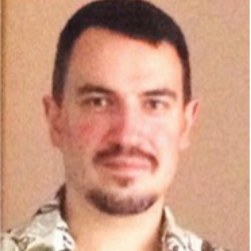
Stepanyan I.V.
Work place: A.A. Blagonravov Mechanical Engineering Institute of the RAS, Moscow, Russian Federation
E-mail: neurocomp.pro@gmail.com
Website:
Research Interests: Artificial Intelligence, Information Theory, Quantum Computing Theory, Medicine & Healthcare, Medicine
Biography
Ivan Victorovich Stepanyan is Ph.D, holder of an Advanced Doctorate in biology (Sc.D.), a leading research scientist at the Laboratory of biomechanic systems of A.A. Blagonravov Mechanical Engineering Institute of the RAS, N.F. Izmerov Research Institute of Occupational Health of the RAS, P.I. Tchaikovsky Moscow State Conservatory. He has more than 140 scientific works. He was graduated from National University of Science and Technology (MSMU, 2003). Theme of his master's thesis (2003) was "Information processes modeling with extended Petri nets". His theme of Ph.D. thesis (2006) was “Neural network algorithms of recognizing the results of acoustic spirometry”. His theme of thesis for Advanced Doctorate (2012) was "Scientific and methodological foundations and bioinformation technologies of risk management in occupational health". Scientific interests: algebraic biology, matrix genetics, biomechanics, bioinformatics, medical devices, phyllotaxis, science-art, disappearing languages, occupational medicine, quantum gravitation, programming theory, artificial intelligence.
Author Articles
Neural Network Modeling and Correlation Analysis of Brain Plasticity Mechanisms in Stroke Patients
By Stepanyan I.V. Mayorova L.A. Alferova V.V. Ivanova E.G. Nesmeyanova E.S. Petrushevsky A.G. Tiktinsky-Shklovsky V.M.
DOI: https://doi.org/10.5815/ijisa.2019.06.03, Pub. Date: 8 Jun. 2019
The aim of this research is the study of pathogenic signs, prognostically significant for the outcome of the disease and restoration of impaired functions at various stages of recovery after a stroke. This work describes a new method of applying a group of artificial neural network algorithms for each of the criteria and for each period of rehabilitation, and it is aimed at analyzing the structural and functional support of motor and higher cognitive functions, including speech and language as well as brain plasticity after ischemic stroke. The functional magnetic resonance imaging (fMRI, DTI) and clinical data machine learning algorithms were used. Self-organizing Kohonen and probabilistic neural network-based models with different structures and parameters were developed and applied for each criterion for periods of 3, 6, and 12 months of rehabilitation. For correlation analyses and modeling additional classifiers, we used: Decision Tree (DT), Support Vector Machine (SUM), k-Nearest Neighbor (KNN) clustering, and Logistic Regression (LR). In the performance evaluation, sensitivity, specificity, accuracy, error rate, and f-measure were used. The using of clinical parameters and mathematical modeling for analysis of brain plasticity mechanisms in stroke patients allowed in some cases to predict cognitive functions within the accuracy of 85-97%. Moreover, it is shown that the functional systems is represented by various brain structures, its synchronous activity and structural connectivity ensures the rapid and most complete restoration of motor and higher cognitive functions, including speech and language (effective post-stroke plasticity of the brain) after a course of neurorehabilitation.
[...] Read more.Other Articles
Subscribe to receive issue release notifications and newsletters from MECS Press journals